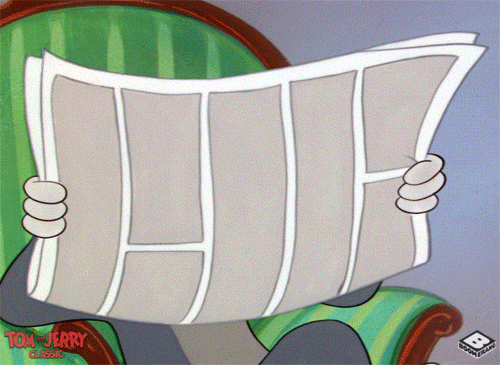
Throughout your school days, you have most likely been taught that there are seven continents on Earth. However, what if we tell you that there are actually eight!

Well, you read that right. Deep in the South Pacific Ocean, geologists recently discovered a large fragment of land, which was long forgotten. The catch is that about 94 percent of it is underwater, with only a handful of islands, such as New Zealand, thrusting out from its depths. And with that, now we have evidence of an eighth continent (or so) – which was lurking in plain sight this whole time!
About 3,500 feet under the south Pacific sits the supposed 8th continent of the world, and it’s called Zealandia. The debate for decades was that of considering Zealandia as a real continent.
While the definition of a continent is debatable, scientists believe that a continent should have clearly defined boundaries, occupy an area greater than one million square kilometers, be elevated above the surrounding ocean crust, and have a continental crust thicker than that oceanic crust.
Zealandia meets all these criteria. And if you were to drain out the ocean, Zealandia might as well stand out as a high-standing plateau above the ocean floor!
The initial problem was that while the oldest crust and rock ever sampled from Zealandia was just 500 million years old, as against the other continents’ crusts that are roughly a billion years old, the new study states otherwise. A recent study published in GeoScienceWorld found that part of the submerged continent is twice as old as geologists previously thought. This study gave the final tick on ‘Zealandia – a continent’ debate.
It goes back to the year 1642, when Abel Tasman, a Dutch sailor, was on a mission to discover a vast continent in the southern hemisphere, whose existence he firmly believed in. So on 14 August, Tasman set sail from his company’s base in Jakarta, Indonesia, with two small ships. He first headed west, then south, then east, eventually ending up at the South Island of New Zealand.
Although he met with many adventures, especially with Māori people – the indigenous inhabitants of New Zealand – he still believed that he had indeed discovered the great southern continent. Evidently, it was hardly the commercial utopia he had envisaged, and he never returned.
Little did Tasman know that he was indeed right! That, there was indeed a missing continent.

Abel Tasman did find the eighth continent, though he didn’t realise it is underwater | Source: Alamy
Since Abel Tasman’s first encounter, scientists have been on Zealandia’s trail for decades. And finally after 375 years, in 2017, a group of geologists announced the discovery of Zealandia – or Te Riu-a-Māui in the Māori language.
Zealandia’s area is about 4.9 million square kilometers, nearly six times the size of Madagascar. In addition to New Zealand, the continent encompasses the island of New Caledonia – a French colony famous for its dazzling lagoons – and the tiny Australian territories of Lord Howe Island and Ball’s Pyramid.
The submerged continent was originally part of the ancient supercontinent of Gondwanaland, about 80 million years ago. For the past 23 million years, the massive continent has been nearly completely submerged. So it is a challenging land mass to study.

Topographic map of Zealandia
Despite being thin and submerged, geologists know that Zealandia is a continent because of the kinds of rocks found there. While the ocean floor is just made up of igneous ones such as basalt, the continental crust is made up of igneous, metamorphic, and sedimentary rocks — like granite, schist, and limestone.
Despite its recent discovery, geologists still feel that there are many unknowns. The unusual origins of Zealandia make it more than a little baffling. For instance, how did the continent manage to stay together when it’s so thin and not disintegrate into tiny micro-continents.
Another mystery is exactly when Zealandia ended up being underwater. Whether it was, in fact, ever considered a dry land? That also raises the questions of who lived there and for how long.
Nearly 400 years after Tasman’s quest, one thing is for sure – just like the mysteries around Zealandia, there is still plenty more that needs to be discovered.
That’s all from us, about the eighth continent of the world. But before you jump into our next article, ponder on this:
Do you think dinosaurs lived in Zealandia? Do tell us in the comments below.
Liked reading this story? Read more such stories in The Learning Tree Blog.
Books are Tanaya Goswami’s first love and cheesecakes come a close second. Talking about movies, music, calligraphy, politics, and Elon Musk will get you listed under the friends’ section of her diary. Ever since moving on from her job as an English lecturer, she spends her time at BYJU’S crafting stories filled with emotion and sprinkled with sarcasm. Outside of work, she’s either learning something new (French, most recently!) or is curled up with a book and a cup of coffee. She firmly believes that discovering what you don’t know is the key to knowledge and is constantly working towards improving herself. Drop in a line at storyweavers@byjus.com if you liked her stories, have something nice to say, or if you have compelling ideas to share!
Comments
Antony
January 26, 2022
Yes dinosaurs lived in seas around Zealandia .Plesiosaur (Kaiwhekea), 7 metres long and lived around 70–69 million years ago in the seas around Zealandia.